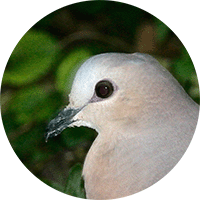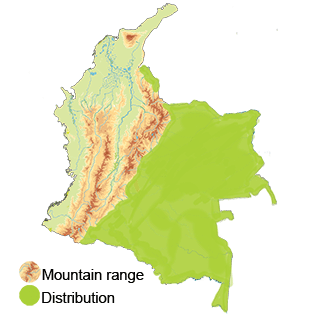Gray-fronted Dove
The Gray-fronted Dove (Leptotila rufaxilla) Read in Spanish
Appearance: The Gray-fronted Dove features a subtle color palette of gray, brown, and white. It has a distinct gray patch on its forehead, from which it derives its name. Its underparts are a light pinkish-gray, and it has a contrasting rufous tail. It is a medium-sized dove with a gentle and unassuming appearance.
Habitat: The Gray-fronted Dove can be found in various forested and wooded habitats, including tropical rainforests and montane forests. It tends to favor areas with abundant vegetation and access to water sources. This species thrives in regions with a mixture of trees and shrubs, allowing it to find food and seek shelter.
Behavior: Gray-fronted Doves are known for their shy and secretive nature. They tend to forage quietly on the forest floor for seeds, fruits, and small invertebrates. Their soft cooing calls can be heard echoing through the forests, especially during the early morning and late afternoon hours. These doves are typically monogamous and form bonded pairs.
Breeding: The breeding habits of the Gray-fronted Dove in Colombia are similar to those of the species in other regions. They build simple nests made of twigs, usually situated in the trees or shrubs. The female lays one or two white eggs, and both parents participate in incubating the eggs and caring for the nestlings once they hatch.
Conservation Status: The conservation status of the Gray-fronted Dove in Colombia is currently categorized as "Least Concern" according to the International Union for Conservation of Nature (IUCN).
Distribution
The Gray-fronted Dove (Leptotila rufaxilla) has a varied distribution across different regions of the country.
Amazon Region: In the Amazon region of Colombia, which encompasses the vast Amazon rainforest and its surrounding areas, the Gray-fronted Dove can be found in the dense tropical forests and riverine habitats.
Orinoco Region: The Orinoco region in eastern Colombia also provides suitable habitats for the Gray-fronted Dove, particularly within the Orinoco River basin and the surrounding plains and forests.
Taxonomy
The (Columba livia)
- Kingdom: Animalia
- Phylum: Chordata
- Class: Aves (Birds)
- Order: Columbiformes
- Family: Columbidae
- Genus: Leptotila
- Species: Leptotila rufaxilla
Vocalization
The Gray-fronted Dove (Leptotila rufaxilla)
- Cooing: The primary vocalization of the Gray-fronted Dove is a soft and rhythmic cooing sound. This gentle call is often repeated in a series of low-pitched notes, creating a peaceful and melodious ambiance in their forested habitats.
- Advertising : During the mating season, male Gray-fronted Doves may produce slightly more emphatic cooing calls as part of their courtship displays. These calls serve to attract females and establish territories within their habitat.
- Contact Calls: Gray-fronted Doves use contact calls to stay in touch with their mate or offspring, especially when foraging or moving through the dense vegetation. These calls are short and help individuals maintain contact in the forest environment.
- Alarm Calls: When sensing danger, Gray-fronted Doves can emit alarm calls to alert others in the vicinity. These calls are sharper and more urgent than their typical cooing sounds, signaling a need for vigilance.





